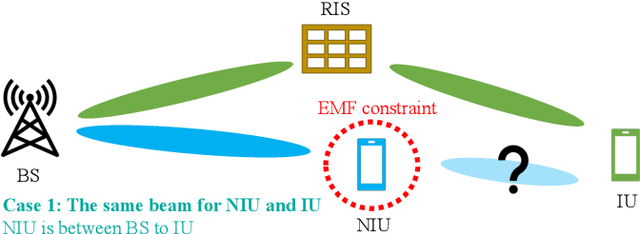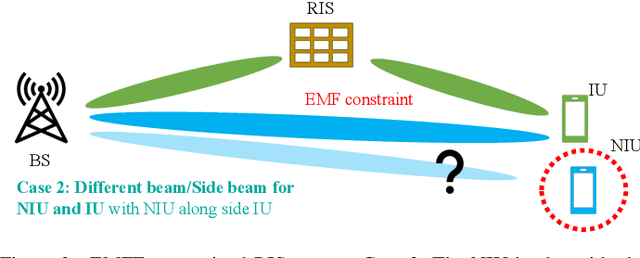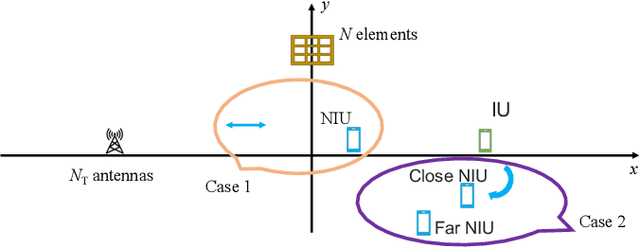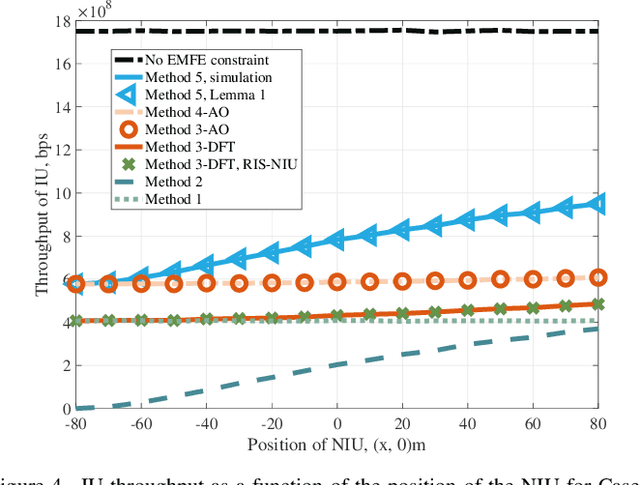Electromagnetic Field Exposure Avoidance thanks to Non-Intended User Equipment and RIS
Paper and Code
Oct 07, 2022



On the one hand, there is a growing demand for high throughput which can be satisfied thanks to the deployment of new networks using massive multiple-input multiple-output (MIMO) and beamforming. On the other hand, in some countries or cities, there is a demand for arbitrarily low electromagnetic field exposure (EMFE) of people not concerned by the ongoing communication, which slows down the deployment of new networks. Recently, it has been proposed to take the opportunity, when designing the future 6th generation (6G), to offer, in addition to higher throughput, a new type of service: arbitrarily low EMFE. Recent works have shown that a reconfigurable intelligent surface (RIS), jointly optimized with the base station (BS) beamforming can improve the received throughput at the desired location whilst reducing EMFE everywhere. In this paper, we introduce a new concept of a non-intended user (NIU). An NIU is a user of the network who requests low EMFE when he/she is not downloading/uploading data. An NIU lets his/her device, called NIU equipment (NIUE), exchange some control signaling and pilots with the network, to help the network avoid exposing NIU to waves that are transporting data for another user of the network: the intended user (IU), whose device is called IU equipment (IUE). Specifically, we propose several new schemes to maximize the IU throughput under an EMFE constraint at the NIU (in practice, an interference constraint at the NIUE). Several propagation scenarios are investigated. Analytical and numerical results show that proper power allocation and beam optimization can remarkably boost the EMFE-constrained system's performance with limited complexity and channel information.
 Add to Chrome
Add to Chrome Add to Firefox
Add to Firefox Add to Edge
Add to Edge